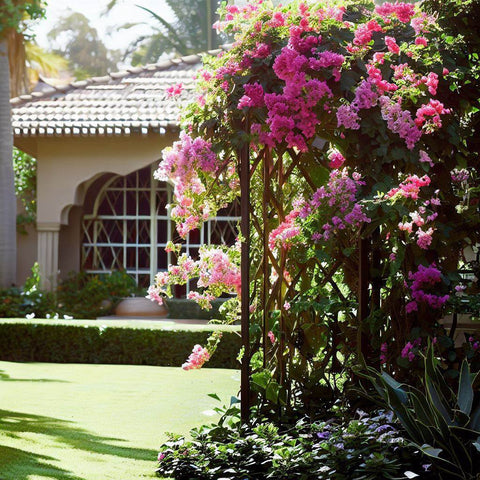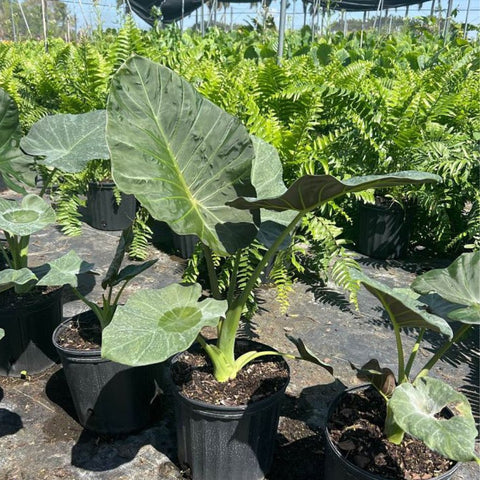Introduction
Tulips have long captured the hearts of gardeners and flower enthusiasts worldwide with their vibrant colors and elegant shapes. Symbolizing perfect love and often associated with springs of hope and new beginnings, tulips are a beloved addition to any garden. In regions with milder winters, planting tulips in the spring rather than the traditional fall can be especially advantageous. If you're considering this unconventional approach, this guide will equip you with essential tips to promote healthy growth and ensure your spring-planted tulips thrive.

Understanding Tulip Physiology and Growth Requirements
The Basics of Tulip Anatomy
The tulip, scientifically known as Tulipa, is an iconic member of the Liliaceae family. Understanding the fundamental anatomy of a tulip is the first step in ensuring successful planting and growth. At its core, the tulip consists of several integral components:
Bulb Structure
The bulb acts as the powerhouse for tulip development, providing essential nutrients and energy. It comprises several layers:
- Outer Tunic: The protective outer skin that shields the bulb from damage.
- Fleshy Scales: Nutrient-storing layers that nourish the growing flower.
- Basal Plate: The growth point from which roots and shoots emerge.
- Bud: The embryo plant encased within the bulb, eventually growing into the flower.
Functioning of the Tulip Bulb
During the planting and growing phases, the bulb's role is crucial. When you plant the bulb, the basal plate initiates root development, establishing a sturdy support system. This structure absorbs water and nutrients, feeding the bud as it gradually transforms into a lush, blossoming tulip.
Essential Growth Conditions for Tulips
The success of your tulip planting largely depends on meeting specific environmental and soil conditions:
-
Sunlight: Tulips prefer full sun exposure for optimal flowering, although they can tolerate partial shade.

- Soil Type: Well-drained soil is imperative, as tulips are prone to rot in soggy environments. Sandy loam with ample organic matter is ideal.
- pH Levels: A neutral to slightly acidic pH (6-7) promotes healthy growth.
- Water Requirements: Tulips require moisture during the growing phase but should not sit in waterlogged soil.
Selecting the Right Tulip Varieties for Spring Planting
Early Bloomers vs. Late Bloomers
When selecting tulip bulbs for spring planting, it's essential to understand the difference between early and late bloomers. This can influence your garden's aesthetics and bloom sequence:
- Early Bloomers: These varieties, such as 'Waterlily' or 'Christmas Dream,' typically bloom in early spring, offering vibrant colors soon after winter.
- Late Bloomers: Varieties like 'Angelique' and 'Queen of Night' bloom later in the season, providing beautiful displays as the spring transitions into summer.
Consider Climate and Hardiness Zone
Your local climate and USDA Hardiness Zone play a crucial role in selecting suitable tulip varieties. In warmer regions, look for heat-tolerant or short chill period varieties. Alternatively, use cold storage to simulate winter conditions before planting.
Fostering Diversity: Colors and Forms
The beauty of tulips lies in their diversity. From classic cup-shaped flowers to fringed and parrot tulips, there's a style for every preference. Incorporating a mix of colors, forms, and heights can create a dynamic and eye-catching display in your garden.

Preparation: Preparing Your Garden for Tulip Planting
Site Selection and Garden Layout
Choosing the right location for your tulips is vital:
- Opt for areas with ample sunlight. Consider planting along south-facing borders where they receive maximum exposure.
- Plan your garden layout by grouping tulips in clusters or rows for a dramatic visual effect.
Soil Preparation
A well-prepared soil bed is essential for tulips to flourish:
- Tilling: Loosen the soil up to 10-12 inches deep to promote root growth.
- Amendments: Incorporate compost or well-rotted manure to improve drainage and fertility.
- Testing pH: Conduct a soil test to ensure pH levels are within the acceptable range, adjusting as necessary with suitable amendments.
Enhancing Soil with Companion Plants
Companion planting can enhance the health and aesthetics of your tulip garden. Consider pairing tulips with low-growing plants like the Agapanthus 'Lily of The Nile' for a complimentary pop of color and texture, or use foliage-rich plants like the Aglaonema 'Silver Bay' to contrast with tulip blooms.

Best Practices for Planting Tulip Bulbs
Timing Your Planting
In milder climates, the optimal planting window extends from early to mid-spring:
- Temperature Considerations: Soil temperatures between 50-55°F (10-13°C) offer an ideal environment for root establishment.
- Chilling Period: If bulbs have not undergone a chilling period, cold storage is necessary before planting.
How to Plant Tulip Bulbs
Proper planting techniques maximize bulb health and flower quality:
- Depth and Spacing: Plant bulbs 6-8 inches deep, spaced approximately 3-6 inches apart to ensure adequate airflow and nutrient access.
- Planting Orientation: Position bulbs with the pointy end facing upwards, ensuring the basal plate rests flat against the soil.
- Covering Bulbs: Fill the hole gently with soil, avoiding compacting, to allow for natural drainage.
Watering and Mulching
Establishing the right moisture environment is crucial:
- Initial Watering: Water immediately after planting to settle the soil around the bulbs.
- Mulch Application: Apply a 2-inch layer of organic mulch, such as shredded bark, to retain moisture and moderate soil temperatures.

Monitoring and Maintenance
Regular monitoring ensures optimal growth:
- Inspect Frequently: Check for any signs of rot or pest infestations, addressing issues promptly.
- Adjust Watering: Avoid overwatering, particularly in wet conditions, allowing soil to dry slightly between waterings.
Encouraging Healthy Growth During the Spring Season
Nutrient Management
Providing nutrients supports robust growth and vibrant blooms:
- Fertilization: Apply a balanced, slow-release fertilizer at planting time or as buds begin to emerge.
- Foliar Feeding: Consider supplemental foliar feeding during the growing season to enhance vigor.
Pest and Disease Control
Effective management of pests and diseases is crucial for maintaining healthy tulips:
- Pests: Monitor for common pests such as aphids, slugs, and snails. Use organic or chemical controls as needed.
- Diseases: Ensure adequate airflow and avoid overhead watering to reduce the risk of fungal diseases.
Promoting Continual Bloom
For ongoing flowering throughout the season:
-
Staggered Planting: Plant bulbs in phases to enjoy continual blooms. Stagger planting dates every two weeks during the planting season.

- Deadheading: Remove spent flowers promptly to encourage energy allocation towards bulb strengthening rather than seed production.
Conclusion: Celebrate Your Tulip Success
Planting tulips in the spring, though unconventional, can be a rewarding experience with the right knowledge and approach. By understanding tulip physiology, selecting appropriate varieties, and adopting optimal planting and care practices, you can enjoy a vibrant and colorful garden throughout the spring season.
Plantology offers a comprehensive range of high-quality bulbs to enhance your garden's beauty. Visit Plantology today to explore our exclusive tulip selection and other unique offerings such as the Adonidia Palm Single. Transform your garden into a breathtaking oasis this spring!
Advanced Care Techniques for Maximizing Tulip Growth
Precision Watering Strategies
Effective moisture management is crucial to prevent both dehydration and overwatering, which can stress tulips:
- Drip Irrigation Systems: Consider implementing drip irrigation to deliver precise amounts of water directly to the root zone.
- Seasonal Adjustments: Adjust watering frequency based on rainfall and seasonal temperature changes, reducing watering in cooler, wetter periods.
Soil Enhancement for Long-Term Health
Beyond initial soil preparation, fostering a biologically active soil ecosystem is beneficial:
- Soil Aeration: Periodically aerate the soil around tulips to encourage root expansion and nutrient uptake.
-
Microbial Inoculants: Use beneficial soil microbes to improve nutrient availability and increase plant resilience.

Chemical-Free Pest Management
Emphasizing sustainable, organic gardening practices ensures lower environmental impact:
- Companion Plants: Incorporating pest-repellent plants like marigolds or garlic can deter common pests naturally.
- Nematodes: Beneficial nematodes can control soil-dwelling pests, promoting plant health without the need for chemicals.
Creative Planting Designs and Arrangements
The Art of Layered Planting
Layering bulbs, also known as "lasagna planting," involves strategic depth planting to achieve sequential blooming:
- Layered Heights: Plant taller late bloomers at the bottom, mid-level varieties in the middle, and shorter early bloomers near the surface for continuous color display.
- Mixed Species: Combine tulips with other spring bulbs like hyacinths and daffodils to create textural and color contrasts.
Color Theories in Garden Design
Understanding color theory can elevate your garden's aesthetic appeal:
- Monochromatic Schemes: Use varying shades of a single color family to create a cohesive, elegant garden bed.
-
Complementary Colors: Pair colors opposite each other on the color wheel, such as yellow and purple, for striking contrasts.

Incorporating Tulips into Modern Landscapes
Tulips can enhance various contemporary garden styles:
- Zen Gardens: Integrate tulips into minimalist settings, using them as focal points amid carefully raked gravel and stone arrangements.
- Vertical Gardens: Use tulips in tiered or vertical garden structures to bring spring blooms into small or urban spaces.
The Historical and Symbolic Significance of Tulips
Tulips in History
Originating in Central Asia, tulips boast a rich history:
- Tulip Mania: In 17th century Holland, tulips became a symbol of wealth, leading to one of history's first economic bubbles.
- Ottoman Roots: The Ottoman Empire cultivated tulips extensively, infusing cultural and artistic symbolism into their design motifs.
Symbolism and Meaning
Tulips carry deep meanings across various cultures:
- Love and Rebirth: Often associated with perfect love and renewal, tulips are a popular gift symbolizing new beginnings.
- Resilience: In some cultures, tulips represent endurance and the spirit of overcoming adversity.
Integrating Tulips into Eco-Friendly Gardening
Promoting Pollinator Health
Support biodiversity by making your garden a haven for pollinators:
- Native Varieties: Whenever possible, choose tulip varieties that are native to your region to provide better support for local pollinators.

- Pollinator-Friendly Plants: Incorporate black-eyed Susan or lavender with your tulips to enhance nectar sources.
Water-Smart Gardening Techniques
Conserve water while keeping your tulips healthy:
- Rain Barrels: Collect rainwater for a sustainable irrigation option.
- Xeriscaping Principles: Implement soil moisture-retaining techniques to reduce the need for supplemental watering.
Natural Mulching Options
Use eco-friendly mulches to enrich the soil and promote microbial life:
- Leaf Mulch: A readily available and decomposable option that enriches soil as it breaks down.
- Stone Mulch: Offers lasting weed control and thermal protection without resource depletion.
Conclusion: A Timeless Journey with Tulips
By incorporating advanced horticultural techniques, exploring artistic planting designs, and appreciating the rich history and symbolism of tulips, your garden can transform into an oasis of beauty and sustainability. With every bloom, tulips offer vibrant displays of color and a legacy steeped in history, making them a cherished addition to gardens worldwide.

Explore the rich diversity Plantology offers by visiting our website to find an extensive range of vibrant tulip bulbs along with eco-friendly gardening supplies. Create a breathtaking garden that stands as a testament to your dedication and passion for gardening.






























Comments (0)
There are no comments for this article. Be the first one to leave a message!